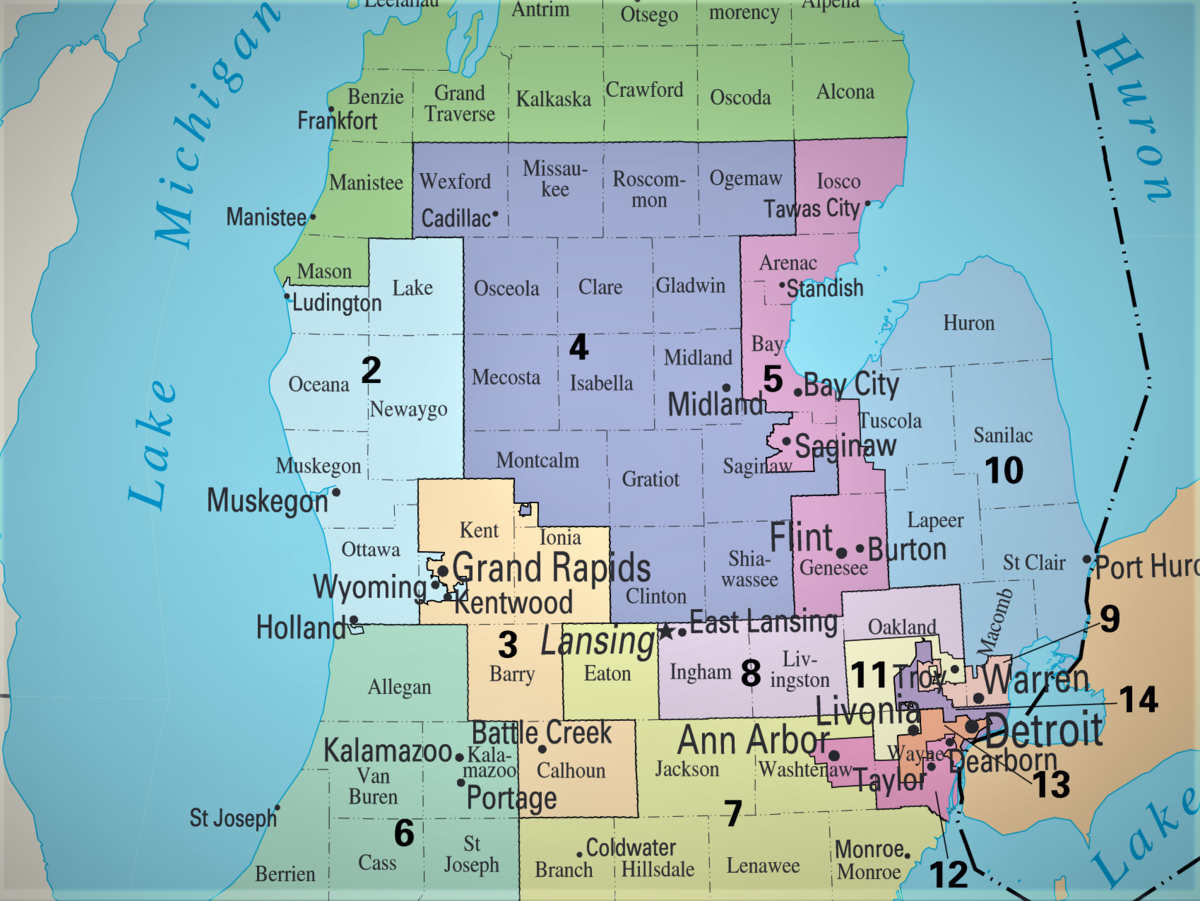When referring to a liberal democratic regime, the first idea that comes to mind is that all citizens have equal rights and duties, regardless of their ethnicity, social class, and political or religious opinion. This notion of equality is implicit in the principle of “one man, one vote,” which, in theory, guarantees everyone the right to choose their government. This principle is enshrined in the introduction to the Constitution of the United States when it states that “For over two centuries the Constitution has remained in force because its framers successfully separated and balanced governmental powers to safeguard the interests of majority rule and minority rights, of liberty and equality, and of the federal and state governments.”
However, despite claiming itself as a “City upon a Hill” flying up a guide to democracy and human rights for the whole world, in practice, the political structure of the United States leaves much to be desired, as the system does not ensure equality of vote for all citizens. Its electoral rules are based on opportunistic and subjective criteria. It blatantly systematically excludes the right to vote for ethnic minorities. Even the presidential election is made indirectly, and often the will of the voters is overshadowed by the few members of the electoral college. An example of this is that often the President chosen by the electoral college does not support the majority of popular votes, as occurred with George W. Bush and Donald Trump elections.
When reflecting on the political and social structure of the United States, it is almost impossible to circumvent the book “Democracy in America,” written by Alexis de Tocqueville. The French jurist analyzes the vitality, excesses, and possibilities of survival of the American political model. He believes that a properly organized society can preserve freedom within the democratic order, contrary to the authoritarian abuses he identified in the French Revolution of 1789. In this respect, it is worth remembering that the democracy of the United States coexisted with slavery until the end of the Civil War in 1865. He visited that country in 1831 to learn about criminal law, but which ended up reflecting on the foundations of its democratic order.
Tocqueville praised popular participation in the United States: “In America the principle of the sovereignty of the people is neither barren nor concealed, as it is with some other nations; it is recognized by the customs and proclaimed by the laws; it spreads freely, and arrives without impediment at its most remote consequences If there is a country in the world where the doctrine of the sovereignty of the people can be fairly appreciated, where it a be studied in its application to the affairs of society, and where its dangers and its advantages may be judged, that country is assuredly America.” But even so, he did not fail to consider what he called “the tyranny of the majority,” as it delimits the spaces in which public debate takes place, including deliberately curtailing the rights of minorities: “In America, the majority raises formidable barriers around the liberty of opinion; within these barriers, an author may write what he pleases, but woe to him if he goes beyond them. Not that he is in danger of an auto-da-fe, but he is exposed to continued obloquy and persecution. His political career is closed forever since he has offended the only authority that is able to open it. Every sort of compensation, even that of celebrity, is refused to him. Before making public his opinions he thought he had sympathizers; now it seems to him that he has none any more since he revealed himself to everyone; then those who blame him criticize him loudly and those who think as he does keep quiet and move away without courage. He yields at length, over-come by the daily effort which he has to make, and subsides into silence, as if he felt remorse for speaking the truth.”
When looking at the current political framework in the United States, we cannot forget these reflections. Instead of organizing a horizontal political system in which the will of the majority can express itself while guaranteeing the space for the survival of the minority, the electoral rules in the United States are confused, unbalanced, contradictory, and exclusionary. This situation is actual for states that are majority Democratic as well as those that are Republican. Electoral rules are defined following party passions and consistently seek to guarantee the hegemony already conquered, thus hindering the alternation of power. It is worth remembering that the Constitution guarantees the states the right to choose the president and that each one organizes the process as it sees fit.
The debate on electoral rules has been very heated in recent months due to the process known as "Redistricting," that is, the decennial reorganization of electoral districts resulting from the release of the 2020 Census. Based on these data, all states seek to rebalance the populations of each community, seeking to avoid under-representation. Typically, this process is organized by state parliaments, which set up commissions to redistribute voters.
Another important issue concerns the redistribution of seats in the House of Representatives, as the 2020
Census showed that some states lost population to the detriment of others. Follow the table below:

Table 1- Gain and Loss of Representatives by State after the 2020 Census.
There was no change in the distribution of seats in the other 37 states. Still, we have to pay attention to the loss of representatives in two frankly Democratic states, such as California and New York, and the gain in 7 states with significant Republican influence, Texas and Florida. But as the policy website FiveThirtyEight, warns, accounting is not simply because "the majority of the states that are gaining seats are red and most of the states that are losing them are blue does not necessarily mean that reapportionment will help Republicans — in the House, at least. That's because many of the fastest-growing areas of red states are increasingly Democratic, so it matters a lot how the new districts will be drawn.”
But still, the Democrats' prospect of losing is more significant, as Republicans have control over redistricting in at least 187 districts, while Democrats influence only 75. Of the rest, 6 are single districts, and 167 are the rules defined by independent committees.
As discussed above, the exercise of majority power is entirely discretionary since, in the state where a party predominates, the rules generally tend to favor its permanence in power. Take the case of Illinois and New York, where the Democrats will coordinate the "redistricting." The redistricting can be done in such a way that it harms the representation of the Republican Party, a process known as "
Gerrymandering," which means redesigning electoral districts to favor a particular party, diluting the demographic weight of a community in districts designed explicitly for this purpose.

Image 1 – Illinois State Redistricting Proposal – 10/23 version.
When looking at image 1, it isn't easy to find consistency with the way districts were redesigned. A flawed process can be seen, as there is no coherence in the map other than the interest in organizing the districts to guarantee the greatest number of seats for the Democrats. In the case above, the design is intended to secure Democrats 14 of Illinois' 17 seats in the House of Representatives.
The problem is not confined to a Democratic state. In Texas, the gerrymandering process is similar in that the proposed "redistricting" seeks to nullify the Democratic Party's influence in the state. See image 2 below:
Image 2 – Texas: Current situation and new redivision of districts, 2021.
The new design of electoral districts harmed the representation of the Democratic Party and also the ethnic minorities that are represented by this party, such as African Americans and Latinos/Hispanics. Redistricting Republican lawmakers said they made a blind choice, but that doesn't match the perceptions of disadvantaged minorities.
An action organized by several NGOs, led by the LEAGUE OF UNITED LATIN AMERICAN CITIZENS (LULAC), is challenging the new electoral mapping in the federal court in El Paso. They argue that although Texas won two additional congressional seats due to population growth between 2010, racial minorities (including those who identify themselves as more than one race) accounted for 95% of the state's population growth, but the number of districts in Texas. Latino majority decreased from 8 to 7, the number of African American majority districts decreased from 1 to 0, while the number of white-majority districts increased from 22 to 23. Plaintiffs argue that these changes constitute vote dilution in violation of the
Law Federal Voting Rights.
In addition to the problems created by redistricting and gerrymandering, minority voting rights have been attacked on several fronts by members of the Republican Party. First, it is worth noting that voting in the United States is held on Tuesdays, a working day, making it difficult for workers to participate.
In addition, it is frequent that in the poorest districts, where most Afro-Americans and Latino populations live, the amount of ballot boxes available is minor, leading to the formation of long lines, in a process that demands hours of waiting outside. According to CNN, based on the data collected by
Georgia Public Broadcasting and ProPublica, there is a significant disparity in the time to vote between white and non-white citizens in that state. After voting closing time for non-whites, the average waiting time was 51 minutes, while it was only six minutes for the white population.
Georgia's electoral legislation is a paradigmatic case, as it has been reproduced in other states with a Republican majority in the state legislatures. These laws aim to make minority voting difficult by limiting postal votes, prohibiting the distribution of water or food in polling lines, or requiring specific documentation for members of minorities. Added to this, people who have suffered a criminal conviction are banned from voting, excluding the African-American and Latino population, whose incarceration rates are higher than that of the white population.
In conclusion, it is important to pay attention to the outcome of the "redistricting," as it is likely to substantially impact the November 2022 elections and threaten the fragile majority that Democrats maintain in both Houses of Congress. It is still too early to assess the chances of the Biden administration, whose disapproval, according to the average of polls organized by
FiveThirtyEight, is 50.9%. However, 10 months after the inauguration of the Biden government, many of the promises made to the Latino community did not materialize, particularly regarding the immigration issue. Given that Donald Trump continues to campaign to return to power in 2024, any loss of support among minorities could undermine the Democrats' ambitions, whether in 2022 or re-election.
 Wikimedia Commons
Wikimedia Commons











